#near eastern history
Text

I just. My brain just fucking broke.
Israel didn't exist in biblical times!!!
Do you know who didn't exist in biblical times? JESUS! "Biblical times" is an actual fucking period in history, which corresponds to the Iron Age through the Persian period, in which Jesus was absolutely not a fucking part of! This period ended like 500 years before he was born! He lived in the the Roman fucking Period you absolute fucking moron! (and he was a fucking Jew you fucking antisemitic piece of shit, and we're not going to talk about what ELSE didn't exist in Jesus's or Biblical times, I've talked about that enough).
And just like the fucking insult.... Israel didn't exists?? The Kingdom of Israel didn't exist??? The Kingdom of Israel that is literally mentioned in both the fucking bible and extra-biblical texts??? The Kingdom of Israel that kept the southern Levant safe for decades from the Assyrian invasion and colonization through one of the greatest and most incredible coalitions in fucking history??? The Kingdom of Israel that led a multi cultured and prosperous (though quite tumultuous, ain't gonna lie) society for like three hundred years before being annihilated by Mesopotamian imperialism??? That Israel didn't exist???
Literally the only thing I see in my head right now is the Omride dynasty just looking at this post with the utmost disgust, like how fucking dare you??!?
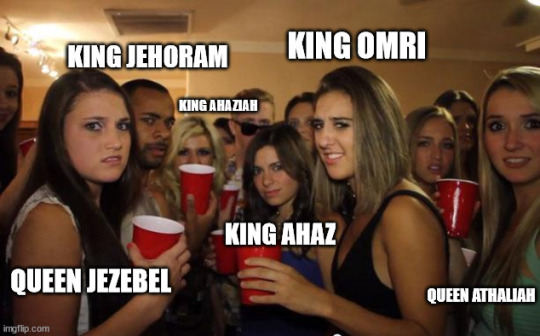
pov: you (the poster of the original twitt and the creator of the fucking Jesus fanart it was responding to) are Shalmanseser III, literally trying to erase Levantine cultures (Jews) from history, about to get your ass whipped by the greatest coalition in history (depressed Jewish archaeologists who fucking had enough)
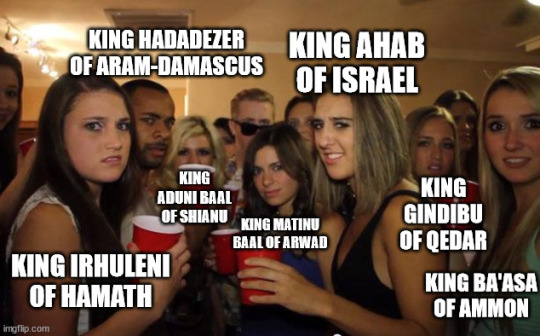
#are they all just as insane as that one girl who said the roman empire didn't exist??#every single time i have the nerve to look beyond the boundaries of jewish social media i am constantly horrified#i just fucking can't even#i stan the house of omri#can we talk about ba'asa's name?#i mean#that's hilarious#to hebrew speakers at least#jumblr#jewish things#archaeology#near east#near eastern history#kingdom of israel
7 notes
·
View notes
Text

~ Man and woman in loving embrace.
Place of origin: Iraq, Nippur
Period: Achaemenid Period
Date: 450 B.C.
Culture: Near Eastern
Medium: Terracotta
#ancient#ancient art#history#museum#archeology#ancient sculpture#ancient history#archaeology#man and woman in a loving embrace#man#woman#love#hug#embrace#nippur#iraq#near east#near eastern#achaemenid#450 b.c.
1K notes
·
View notes
Text


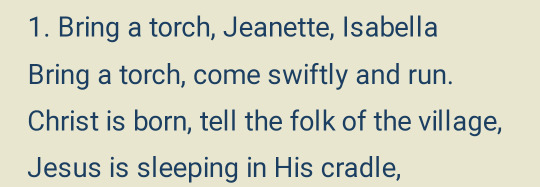
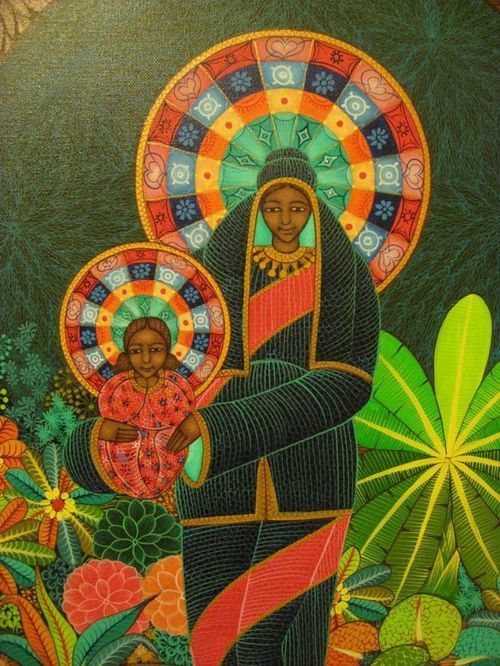

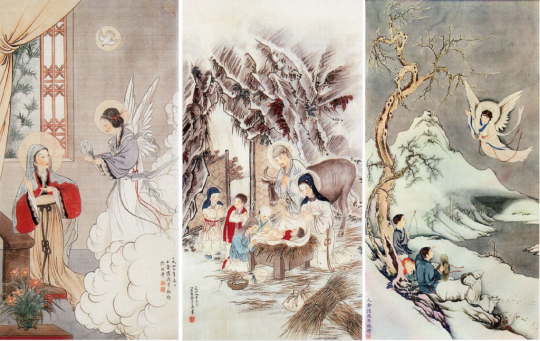

We see him come and know him ours
Russia: "Carol of the Russian Children," traditional // Kenya: The Nativity, Elima Njau // France: "Bring a Torch, Jeanette Isabella," Nicolas Saboly // Haiti: Madonna and Child, Ismael Saincilus // Australia: "The Three Drovers," William James // China: Tryptic by Lu Hongnian // Canadian/Algonquian: "Huron Carol," Jean de Brébeuf
#the visual depictions are lovely#but what really gets me every time are the little cultural details in the music#music that tells the story of the Nativity while placing it in a world that's familiar to the listener#fur robed moujiks on snowboard plateaus in place of middle eastern shepherds#bark lodges instead of stables and rabbit skin in place of swaddling clothes#wandering hunter and chiefs from far off places instead of shepherds and wise men (man i love the Huron Carol)#and little french girls running to gather the village to come see Jesus#it's easy for an excess of historical concern to make Jesus feel distant and far off#/I know/ that Jesus was born in the ancient near east and have had my fill of books and sermons and the like unpacking the implications#I've laughed with my friends and family at the wild inaccuracies of Nativity sets and tellings#the crazy blonde mary in the kids nativity set at Walmart#what is that alpaca doing at the living Nativity don't they know those are south American?#yada yada#and then i look at these carols and think. it's okay not to get mired in the history. good even#yes Jesus entered into time and space in a very specific manner#but he also came for all of us#as another carol says: we see him come and know him ours#i just think this practice is lovely#that the impact of the Incarnation was such that it send little french girls running to their villages#and drew algonquin hunters and russian peasants to the manger to see him#it's the great crowd of witnesses in a way#all of us together preparing him room throughout all the corners of the earth#in Bethlehem that night it was only the shepherds who got to see him#but in spirit it was all of us#because it's just like the angel said:#good news of great joy which will be to all people#to all people#starting with the shepherds and going out to all the earth#unto us a child is born#intertextuality
75 notes
·
View notes
Photo


A Large Collection of Near Eastern Cylinder Seals, and other Near Eastern objects
Circa 4000-500 B.C.
including Jemdet Nasr, Uruk, Sumerian, Neo-Babylonian, Akkadian, Assyrian and Mitannian, engraved in lapis lazuli, serpentine, hematite, marble, and other stones, comprising a wide variety of subjects, as well as several Bactrian bronze stamp seals.
#Near Eastern Cylinder Seals Circa 4000-500 B.C.#ancient seals#ancient artifacts#archeology#archeolgst#history#history news#anicent history#ancient culture#ancient civilizations
586 notes
·
View notes
Text
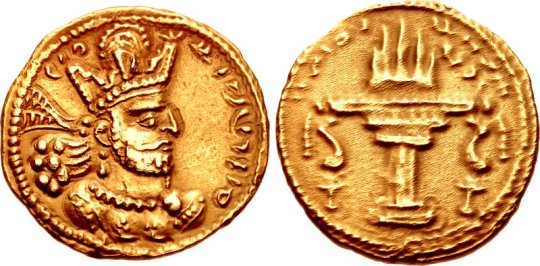
Gold coin of Shapur (Šābuhr) II "the Great," king of Sassanid Persia from 309 to 379 CE. On the obverse, the bust of Shapur, wearing a mural crown topped with the jewel-studded globe known as a korymbos; on the reverse, a fire altar, reflecting Shapur's aggressive promotion of Zoroastrianism within his realm. Artist unknown; minted ca. 320 CE and found in the present-day nation of Georgia. Photo credit: Classical Numismatic Group, Inc. http://www.cngcoins.com
#history#ancient history#Near East#Ancient Near East#Persia#Ancient Persia#Persian Empire#Sassanids#Sassanid Persia#Shapur II#art#art history#ancient art#Near Eastern art#Ancient Near Eastern art#Persian art#coins#ancient coins#numismatics#ancient numismatics#gold#goldwork#Zoroastrianism
153 notes
·
View notes
Text
cant believe i have to do shit tomorrow life's so unfair
#i have akkadian study group then a meeting at the ancient near eastern history institute then come back home and shower before the theatre#and then come back home and on Saturday go to my grandma's and make scones and then go to my bf's and then theatre agai#and then the weekends gonna be nearly over im already exhausted
6 notes
·
View notes
Note
Looking at your interesting — and always high quality — posts on the “Copenhagen school”. It seems we share similar concerns about later datings of the final redaction of the Torah and other Hebrew texts, to the 3rd and even second century BC by Gmirkin and others. How much do you think this reduces ancient Near Eastern literature to just variations on the classical Greek literature templates?
Thank you for your ask and for your kind words on the quality of my posts.
Concerning the substance of your ask, I am not a Biblical scholar, so I cannot speak with some authority on such topics. I posted about the "Copenhagen school" because I found its positions very interesting and thought provoking. But I think that most (non fundamentalist or "Biblical maximalist"...) Biblical scholars today place the composition of the bulk of the final version of the Hebrew Bible (the Old Testament for Christians) in the 5th century BCE, prior to any serious contact of the Jews with the Greeks, with the exception of the Book of Daniel, of some other pseudepigrapha and perhaps of the Book of Judith, of the Book of Esther and of Qohelet, which are placed in the Hellenistic period.
Now, even if the "Copenhagen school" and Gmirkin are right about the datings of composition of the final version of the Bible, so that we could accept the possibility of a Greek influence on it (other than the influence of Greek philosophy and culture on choices of translation from Hebrew to Greek and on the interpretation of the Bible, about which there is not much doubt), I think that it would be totally wrong to say that the Hebrew Bible, let alone ancient Near Eastern literature in its entirety, could be reduced to just variations on the classical Greek literature templates. In fact ancient Near East had a very important literary tradition which predates for many centuries even archaic ancient Greek literature, although of course the truth remains that the Greeks developed (mostly independently) and perfectioned pre-existing literary genres like epic and didactic and lyric poetry and revolutionized literature by creating new genres, like drama, historiography, rhetoric and philosophical dialogue and treatise. Personally I tend to see the Hebrew Bible as part of a broader Near Eastern religious and literary tradition, although there is for sure also much originality and new beginnings of crucial importance in content and form in the Bible.
On the other hand, even if the "Copenhagen school" is wrong in its main position, I think that their approach has the important merit that it drew attention to the analogies and similarities existing between ancient Greek literature and especially Herodotus' Histories and the Hebrew Bible, a field of research that I find very interesting.
But again this should not make us forget the essential differences that exist between these works. To focus only on the relationship between the Bible and Herodotus, which preoccupies the most scholars of the "Copenhagen school" and others who could be affiliated with it, even those of the books of the Bible which do not just expose various "myths of origins and of founders", but relate the history of a non mythological past and contain often (although for sure not always) accurate information, especially on the history of the two Hebrew kingdoms, are in fact above all hierohistory. I say this because these books are seen by their community as divinely inspired and the historical events are interpreted (and in not few cases even distorted or invented) in them exclusively on the basis of the relationship of the God of Israel with his people and of the respect or transgression by the latter and its leaders of the "pact' dictated by the former.
On the contrary, Herodotus presents himself as an investigator of the past who takes individual responsibility for what he says and adopts some explicitely stated methodological principles in his research. Moreover, although he believes in the (mostly indirect) intervention of the divine in the course of events and adopts a "tragic" conception of history, according to which the powerful and arrogant are eventually punished for their hybris, he pays mostly attention to and investigates the natural and above all the human causes of events (geography and environment, chains of interactions between actors, the conflict between the desire for domination over others and the aspiration to freedom, the necessary limits of imperial expansion, the tension between the common human nature and the vast diversity of cultures between human groups, institutions and their influence on collective and individual characters, military techniques and equipment, good or bad decisions of the historical actors in given circumstances) and tries to discern some patterns which underlie history.
6 notes
·
View notes
Text
Author: Kevin Mills
Description from Bloomsbury:
An introduction to ancient myths and the critical discussions that surround them, this book dives into the stories of pre-modern culture, taking a comparative look at how they have shaped the West and modern storytelling as we have come to understand it today.
It makes texts and scholarship from near Eastern, Classical and Celtic disciplines engaging and accessible, and traces narrative meaning through stories from ancient Mesopotamia to the BritishMedieval Period, offering compelling pathways into such writings as The Epic of Gilgamesh, Genesis and Job, The Odyssey, The Mabinogi, TheLife of St Cadoc and Sir Orfeo. Looking at each in detail, Myths and Ancient Stories also explores myth through a modern lens, probing at how, in this scientific age, it continues to inspire contemporary film, games and literary works such as those by, Margaret Atwood, Colm Tóibín, Madeleine Miller and Pat Barker.
Impressive in breadth and bringing together a wide range of foundational texts from diverse traditions for the first time, this work is the ideal orientation to the ancient works central to English literary culture, shedding light on the mythological roots of storytelling and narrative.
#to read list#book#ancient myth#mythology#Kevin Mills#Bloomsbury#Myths and Ancient Stories#Narrative#Meaning and Influence in the West#pre-modern culture#storytelling#literary studies#near eastern studies#classical studies#celtic studies#narrative#literary culture#The Epic of Gilgamesh#Book of Genesis#Book of Job#The Odyssey#The Life of St Cadoc#The Life of St Orfeo#The Mabinogi#arts and humanities#arts and culture#stories#history
4 notes
·
View notes
Text
A very special comb.

Considering the very recent announcement coming from Tel Lachish I thought I’d write a little about what this discovery means in terms of the history of writing in the Near East, and Canaan specifically.
In the 2016 June-July archaeological season an ivory comb was discovered and put into storage (standard practice, it takes years to go through finds). It was only re-examined recently, and an inscription was found, the inscription, a spell of protection against lice was possibly written circa 1700 BCE. The inscription reads "May this tusk root out the lice of the hair and the beard.” The teeth of the comb even had the remains of lice nymphs, this comb was used for the purpose given.
But that, whilst cool is not why we are so excited.
What makes this comb particularly special is what language this inscription was written in, and the proposed date.
The comb (if this date is correct) is the oldest example of the Proto-Sinaitic script, it is also the earliest full sentence of this writing system found in Israel. This writing system has so few examples that it is a running joke whenever the “Australians” join a dig that we will write the alphabet on a rock and joke about it being the greatest find ever. It was one of the jokes pulled by a friend of mine at this exact dig.
Now we seemingly not only have proof that this was more than a few letters and names that Canaanites were playing around with at the time, but we now have a solid example of Canaanites using their own alphabet in daily life during the Middle Bronze Age in Canaan proper, a time where the most prevalent script was Akkadian Cuneiform.
The timeline for Proto-Sinaitic script is not well established (very few examples of this script exist, and nothing from the early phases) but the consensus is that this script was invented by Canaanites in Egypt circa 1800 BCE. However, there are some doubts as to whether the script really arose in Egypt, or the Hyksos homeland. What we do know is this alphabet, the first in existence and the basis for our current writing system, was greatly influenced by Egyptian hieroglyphics. We only had a few words, and a few letters dating from this early period, the thought was that, because most of the substantial examples of the Proto-Sinaitic script date from the 13 century BCE onwards, that it was not really used prior to the early Iron Age, after the Akkadian Cuneiform writing system went into disuse due to the Bronze Age collapse. Anything before the 13th century BCE is either poor in quality or removed from its original context (makes dating the text harder). All pre 13th century BCE inscriptions were single letters or words.
Enter Tel Lachish and this ivory louse comb, Lachish was a major city state during the Second Millennium BCE and is where most of these Proto-Sinaitic inscriptions were found, if any writing dating earlier than the Iron Age exists, it’s at this site. The existence of this comb, found at the highest point of the site (where you typically find both public buildings and elite homes) tells us that firstly, Lachish was importing ivory from Egypt and making these combs in the same style as those found during the Second Intermediate Period (the comb is double sided as opposed to the more traditional Canaanite one sided comb), and that our scribe was not great at writing in a confined space. The letters are increasingly smaller and more squished as they go along. It also suggests that the wealthy were learning to write their own language in their own script, alongside Akkadian Cuneiform.
The comb being used for lice removal tells us that Canaanites were using their own language and their own writing system at home at least for ritual purposes, something we also see in Egyptian and Hittite cities, and its use may have been more commonplace than initially though. From what we know about our Iron Age examples, Proto-Sinaitic script was mostly written on perishable materials with ink (Lachish is moist as anything and the soil is incredibly fertile, not a great preserver of papyri or ink).
Why is this important? Akkadian Cuneiform was the major form of international writing during the Middle to Late Bronze Age and was used from Babylonia to Egypt, Canaan to Anatolia, and all the way to Iran. The Amarna Letters, a collection of correspondence between the pharaohs of the late 18th Dynasty and their Canaanite constituents were written in this international script, a script mostly written with a reed stylus on clay or carved into stone stele. The thought that Canaanites may have had two writing systems makes a lot of sense when you take this international correspondence into context, Egypt won’t write to Canaanite kings in hieroglyphs or hieratic script, Hittites won’t communicate using Luwian cuneiform of hieroglyphs, those are specifically liturgical languages.
What this find tells us if the 1700 BCE date is true (the layer it was found in has an Early Iron Age date, which complicates everything), is that Canaanites were using their own alphabet for ritual purposes at least 400 years earlier than what we initially thought.
#I wrote this for the Bronze Age table top games i'm working on#I'm both a concept artist and the Near Eastern Historical consultant#I do bronze age digos#archaeology#history#bronze age
62 notes
·
View notes
Text
the Oriental Institute at the University of Chicago has officially changed its name to the Institute for the Study of Ancient Cultures, North Africa & West Asia (ISAC). though there is an ongoing discussion about the problematic history of the word "oriental" and UChicago has been criticized in the past (most notably by Palestinian post-colonial theorist Edward Said) for their continued usage of this word, the University itself claims that changing the name of the Institute was to prevent confusion, since the racist term "oriental" has also been applied to East Asia, and the Institute's curriculum is focuses on the historical "Orient"--Egypt and the Near East. if you feel so inclined, please consider sharing your thoughts on the Institute's name change (including its lack of transparency regarding its own problematic history with the "Orient") by emailing isac-namechange(@)uchicago.edu.
#isaact.txt#archaeology#art history#near eastern archaeology#near eastern studies#near east#university of chicago#current events
9 notes
·
View notes
Photo

The pyramidion of the tomb of the “Priest of the Apis” Ptah-mose. The dead couple are praying to the sun gods Khepri, Re-Harakhte, and Atum.
Limestone.
New Kingdom, 1340-1290 BCE
National Museum of Denmark, Department of Classical and Near Eastern Antiquities
#denmark#history#historyblr#history museums#national museum of denmark#classical and near eastern antiquities#egyptian history#egyptian history exhibit#ancient egypt#ancient egyptian artifacts#ancient egypt exhibit#museums#museum
4 notes
·
View notes
Text
Inanna, known as the Queen of Heaven, is the Sumerian goddess of love, sex, beauty, fertility, war, power, and divine justice. The Akkadians, Babylonians, and Assyrians called her Ishtar. She was the patron goddess of the Eanna temple of the Sumerian city of Uruk.
Her symbols were the lion, the owl, the eight-pointed star, and the hamsa. Women used to wear hamsas to increase fertility and ensure healthy pregnancies. She was also associated with the planet Venus.

#inanna#mesopotamian art#mesopotamian mythology#mesopotamia#mesopotamian religion#sumerian#ancient sumeria#hamsa#ancient near east#ancient gods#middle eastern history#queen of heaven#uruk
12 notes
·
View notes
Text

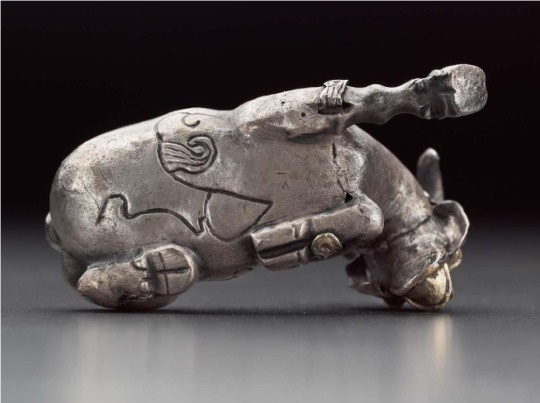
~ Mountain goat.
Place of origin: Near Eastern, Iranian
Period: Elamite, Proto-Elamite
Date: 3500–2700 B.C.
Medium: Silver and sheet gold.
#ancient#history#ancient art#museum#archeology#ancient sculpture#ancient history#archaeology#iran#iranian#near east#near eastern#elamite#3500 b.c.#2700 b.c#silver#goat#mountain goat
2K notes
·
View notes
Text
...
#everything needs to stop being so interesting. like bro i wanna focus on one thing at a time#but not its like everything constantly so im like trying to hype myself up to do photosynthesis stuff bc#its interesting and will b useful before i start my phd#but my brain is like: no. u want to draw and learn about the history of religion in the near east#someday someone will approach me wanting to convert me to their religion and they will not be prepared for my readiness to#jump into theological discussion. like if my dad dragged me to church now id probably go harass the pastor afterwards and b very critical#abt their presentation lmao. religion is just super interesting from an academic perspective#it is a bit weird tho bc now when i see ppl getting weird and gate keepy abt obscure religious stuff im like bro wtf#thats probably an aspect taken from other traditions of the time before the judeo christian god was consolidated as an idea#like theres so much lore and interpretation wtf r u talking abt? and then im like oh wait. i somehow forgot this is a religion and ppl#believe these stories as the word of god. which makes it even more interesting bc it makes academic discussion contentions#sigh. whatever. also shout out to the time i got into the truck for sampling. turned to my lab mate and went: hey i went in deep on the#jesus lore so im gonna rant at u for like an hour about unpacking jesus the man thr myth thr legend lmao#to b fair it was kinda his fault i started on this path bc hes like weird and judgmental abt ppl believing in religion and i was like hm i#dont like that. religion is interesting. i will not learn more bc u have annoyed me. bc that's how my brain works and here we r#last year evolution was my big thing and this year its near eastern religion lmao#unrelated#*i will lean more. not i will not learn more
3 notes
·
View notes
Text

Two heroes grapple with a foe. The scene is sometimes interpreted as a depiction of Gilgamesh and Enkidu's battle with Humbaba from the Epic of Gilgamesh. Basalt relief sculpture by an unknown artist; 10th century BCE (Neo-Hittite/Hurritic). From Tell Halaf in present-day Syria; now in the Walters Art Museum, Baltimore. Photo credit: Walters Art Museum.
#art#art history#ancient art#Near East#Ancient Near East#Near Eastern art#Ancient Near Eastern art#Gilgamesh#Epic of Gilgamesh#sculpture#relief sculpture#stonework#basalt#carving#Walters Art Museum
393 notes
·
View notes
Text
Starting classes again this week. I missed it so much.
#personal#I had a burnout/doubts about the choices I made last winter but I realized after getting so excited to talk about#biblical/ancient near eastern history with people that I'm making the right choice for myself in regards to studies
0 notes